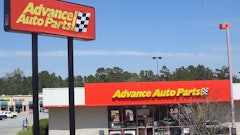
Toronto, Ontario — A deep dive into the current consolidation trends of the collision repair industry published by the Financial Post last Thursday offered up some scathing criticism for the business practices of insurers in the auto repair space, paired with some legislative solutions that could give some choice back to customers.
Headlined “Self-preferencing is cannibalizing Canada’s auto-repair industry,” author of the piece and head of McMaster University’s Public Policy program, Vass Bednar drilled into the modern reality of vehicle ownership, and by extension the vehicle repair experience, by pointing out the numerous ways in which consumer choice has slowly, but progressively, slipped away.
The first and most basic example of this erosion of consumer agency, Bednar claims, is the transition from true vehicle ownership to the grey area we currently occupy, where features you previously had ostensible ownership of, such as heated seats, remote start ignition and automatic high beams, can now be attached to a subscription model and withheld by an OEM, even if your vehicle still physically houses the technology.
This concern extends further when the issue of intangible vehicle data is brought into the equation, according to Bednar, as a lack of control over that data again forces the consumer to be subject to the will of the OEM.
The crux of Bednar’s concerns lie with the fact that insurance companies are quickly insinuating themselves into the collision repair industry in ways they never have before.
The power insurers have in our industry allows them to have nearly unchecked influence on labour rates, as well as mandate the use of certain parts over those specified by OEMs if they see fit, leaving both repair facilities and customers with little choice in the proceedings.
Direct repair programs are a well-understood idea for any facility owner at this stage in the game, but the idea of insurance companies operating their own collision repair centres under the auspices of customer convenience is a step too far for Bednar; not to mention a practice that has already been squashed in other industries.
She points out that the pharmaceutical industry has already faced legislation that prevents large drugstore chains from granting exclusivity to generic drug manufacturers, and a similar solution may be in order for the collision industry.
All this is to say that the way things are running today will do our industry no favours in achieving what we need for the future—namely, better parts, better pay and more technicians to meet the national labour gap.
Bednar points out that technicians and facility owners have long been complaining anonymously about the ways they feel their insurance partners undermine their expertise in repair procedures, but are unable to speak out due to fear of reprisal and the effective blacklisting effect that would result.
Ultimately, the prescription Bednar recommends is a thorough review on the state of competition in our industry that holds these business practices to light in the same way that is done with other industries.























